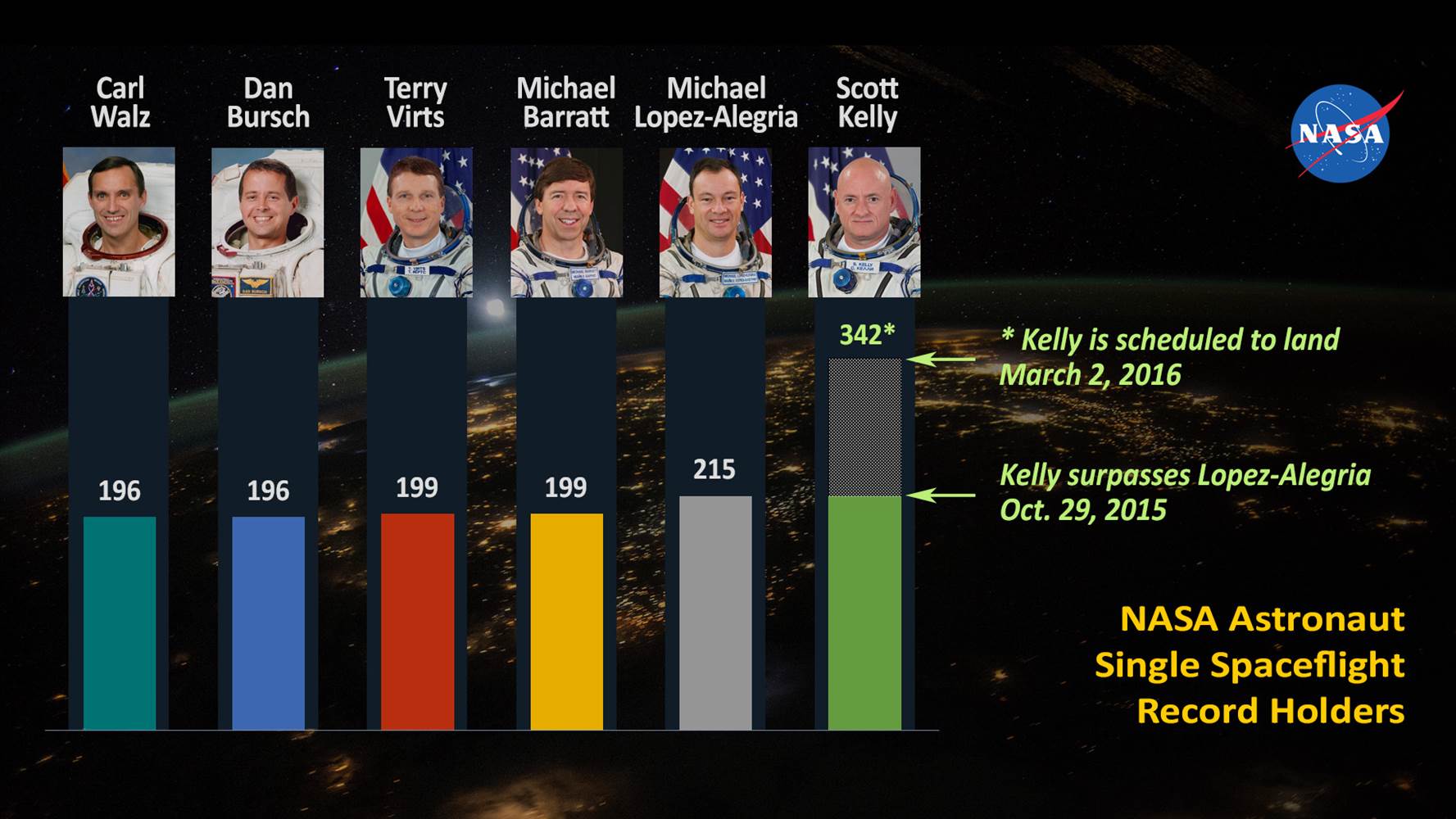Scott Kelly's Historic "Year in Space" Mission Brings Us One Step Closer to Mars
Language
Reading Level
Listen to Article

History was made on March 2, 2016, when a Soyuz TMA-18M spacecraft traveling from the International Space Station landed in a remote part of Kazakhstan. The landing was cause for celebration as the craft carried American astronaut, Scott Kelly, and Russian cosmonaut, Mikhail Kornienko, home from their 340-day mission aboard the International Space Station.
During their "Year In Space," the two astronauts orbited Earth 5,440 times, covering a total distance of 143,840,000 miles! This enabled them to witness more than 10,900 spectacular sunrises and sunsets. Kelly conducted three spacewalks while Kornienko participated in one. The astronauts also performed a wide range of experiments to learn about the effects of spaceflight on the human mind and body.

While their days were certainly busy, it did not stop Kelly from 'monkeying' around. In a recent video that he released to his fans on social media, the astronaut is seen wearing a gorilla suit and chasing British astronaut Timothy Peake through the station. His previous stunts include playing ping-pong with water drops and doing 360° flips inside his gravity-free home.
Though life on Earth may seem a little dull in comparison, Kelly is now doing the things he missed the most during his extended stay at the International Space Station — Spending time with family, swimming, and eating fresh produce.

The astronaut, who announced his retirement nine days after the mission ended, will continue to undergo extensive testing for a few months. Though the long-term impact will not be known for a few years, Kelly who is working on a memoir about his epic journey, recently said: “I lost bone mass, my muscles atrophied, and my blood redistributed itself in my body, which strained my heart.” But despite the physical setbacks, the astronaut has no regrets about being part of this pioneering mission that may pave the way for extended human space travel.
Though this was the longest time spent in space by a US astronaut, it was not the longest time ever. That credit goes to Russian cosmonaut Valeri Polyakov, who spent 438 consecutive days aboard the Mir Station from January 1994 to March 1995. This, however, is the first time that the astronauts are being extensively tested to understand both the physiological and psychological effects that prolonged space travel have on the human body.

In Scott Kelly's case, the scientists will be able to compare the test results with those of his twin brother, Mark Kelly, also a former NASA astronaut. Since the two have identical DNA, it will provide the researchers the unique opportunity to compare the differences in the mental and physical health of a human living on Earth vs. one living in space.
Resources: cbsnews.com, scientificcomputing.com.
Cite Article
Geography
Learn Keywords in this Article
328 Comments
- 00f 00falmost 7 yearslove the monkey lol
- daquanalmost 7 yearsawsome
- jimmyalmost 7 yearsi love the monkey
- mealmost 7 yearsmonkey was haiiarious
- MONKEYover 7 yearsThe monkey part was lit, but there's only one real monkey.
- not calover 7 yearsThis is great Really detailed article
- Daquanover 7 yearsWelcome back kelley
- JDogover 7 yearsThis inspired me to go to space. thank you
- hahhahahv ghahfover 7 yearsthe monkey is art you are are great people and I think you should post more videos like this because it made me and my friend jen happy and now we want to go to space thank you very much!!!!!!!!!!!
- some guyover 7 yearscool